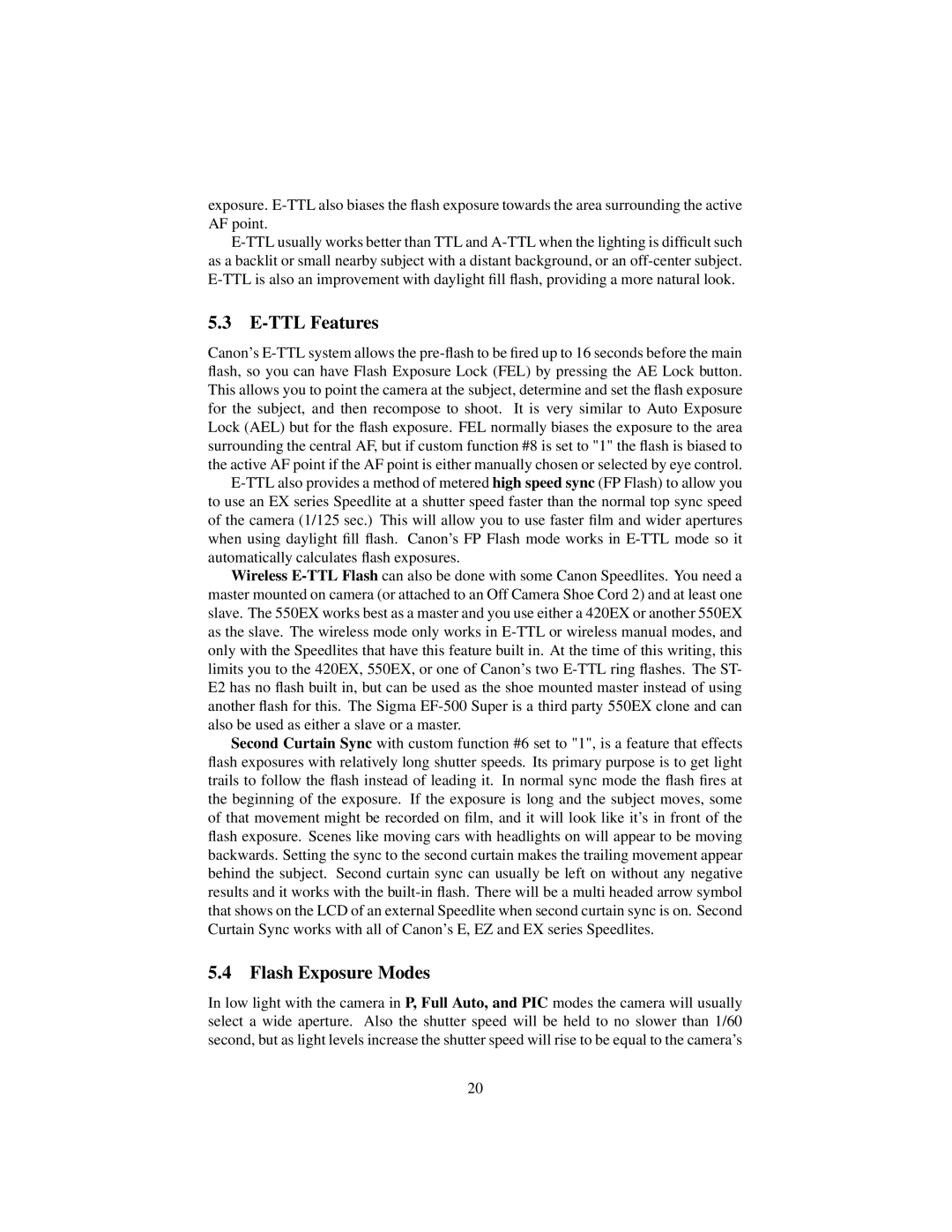exposure. E-TTL also biases the flash exposure towards the area surrounding the active AF point.
E-TTL usually works better than TTL and A-TTL when the lighting is difficult such as a backlit or small nearby subject with a distant background, or an off-center subject. E-TTL is also an improvement with daylight fill flash, providing a more natural look.
5.3 E-TTL Features
Canon's E-TTL system allows the pre-flash to be fired up to 16 seconds before the main flash, so you can have Flash Exposure Lock (FEL) by pressing the AE Lock button. This allows you to point the camera at the subject, determine and set the flash exposure for the subject, and then recompose to shoot. It is very similar to Auto Exposure Lock (AEL) but for the flash exposure. FEL normally biases the exposure to the area surrounding the central AF, but if custom function #8 is set to "1" the flash is biased to the active AF point if the AF point is either manually chosen or selected by eye control.
E-TTL also provides a method of metered high speed sync (FP Flash) to allow you to use an EX series Speedlite at a shutter speed faster than the normal top sync speed of the camera (1/125 sec.) This will allow you to use faster film and wider apertures when using daylight fill flash. Canon's FP Flash mode works in E-TTL mode so it automatically calculates flash exposures.
Wireless E-TTL Flash can also be done with some Canon Speedlites. You need a master mounted on camera (or attached to an Off Camera Shoe Cord 2) and at least one slave. The 550EX works best as a master and you use either a 420EX or another 550EX as the slave. The wireless mode only works in E-TTL or wireless manual modes, and only with the Speedlites that have this feature built in. At the time of this writing, this limits you to the 420EX, 550EX, or one of Canon's two E-TTL ring flashes. The ST- E2 has no flash built in, but can be used as the shoe mounted master instead of using another flash for this. The Sigma EF-500 Super is a third party 550EX clone and can also be used as either a slave or a master.
Second Curtain Sync with custom function #6 set to "1", is a feature that effects flash exposures with relatively long shutter speeds. Its primary purpose is to get light trails to follow the flash instead of leading it. In normal sync mode the flash fires at the beginning of the exposure. If the exposure is long and the subject moves, some of that movement might be recorded on film, and it will look like it's in front of the flash exposure. Scenes like moving cars with headlights on will appear to be moving backwards. Setting the sync to the second curtain makes the trailing movement appear behind the subject. Second curtain sync can usually be left on without any negative results and it works with the built-in flash. There will be a multi headed arrow symbol that shows on the LCD of an external Speedlite when second curtain sync is on. Second Curtain Sync works with all of Canon's E, EZ and EX series Speedlites.
5.4 Flash Exposure Modes
In low light with the camera in P, Full Auto, and PIC modes the camera will usually select a wide aperture. Also the shutter speed will be held to no slower than 1/60 second, but as light levels increase the shutter speed will rise to be equal to the camera's
